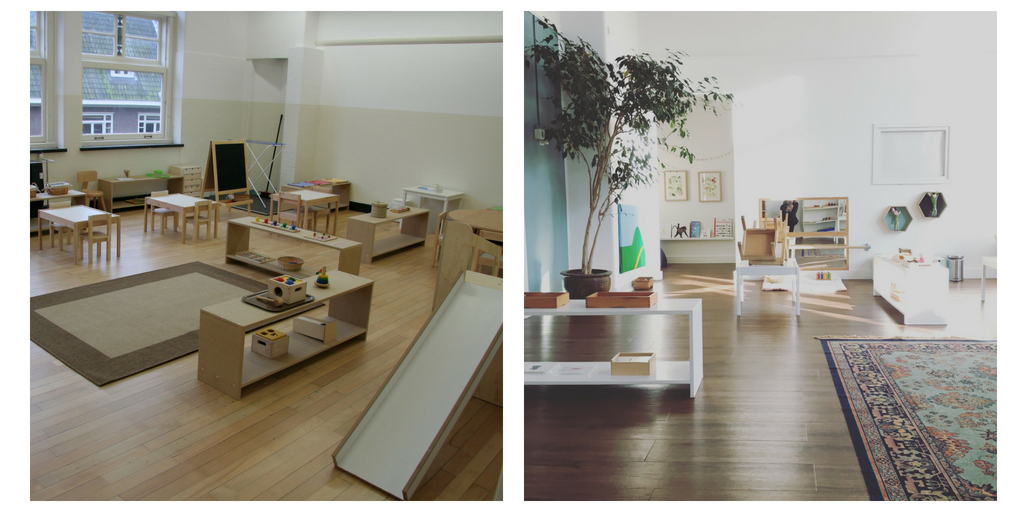Can we take Montessori too far?
This is a letter of apology of sorts. For my part in raising standards for parents that might be unattainable. And to address some myths about what Montessori is.
I really do believe that we can be kinder guides to our children; that children love to participate in daily life when we prepare our homes consciously; and that learning is a natural process that does not have to be forced on children.
However, I think Montessori sometimes gets taken too far or is misconstrued.
Below I will highlight some things I think might take Montessori too far, that aren’t necessary for the average family.
But please do not take this as a judgment if you do any of these things. Consider it as food for thought as you work out what Montessori is for your family.
Myth 1: Our homes have to be perfect
I was turning 26 when my first child was born in the Year 2000. And, believe it or not, this was before the internet and social media were the go to sources for finding out information. Whilst I was interested in Montessori, I don’t remember ever finding anyone blogging about it back then, or even doing a google search about setting up my home Montessori-style.
So I just did my best from this book and from attending a Montessori parent-toddler class with my children. I don’t even have any Montessori “shelfies” to share with you, but I can promise you that we had some plastic toys, probably too many things out at a time, and we largely improvised to give our children some independence in the home with things we already had.
There were no learning towers – we used our step ladder from a hardware store.
The small table and chair and shelves we used were from Ikea – no custom furniture made.
We didn’t have a small fridge for our children to reach their own snack – when they were smaller I would help them reach what they needed.
What we did have – an area in each part of our home for our children to feel part of the family; a low cupboard in the kitchen for them to be able to help themselves to help set the table; a selection of toys which I rotated around once a week; and a backyard with a large pile of dirt.
Even my first classroom was far simpler than my current classroom after 10 years of running my own school. And yet the children benefited just as much in both environments.
So if you are feeling overwhelmed by the pictures on Instagram, take a deep breath. It’s lovely to set up these spaces for our children. But don’t be afraid to use what you have, spend more time being present with your children than sourcing all the perfect Montessori materials, and use the photos you see as inspiration but not as a must-have to “be Montessori”.

Myth 2: We need to accommodate our child’s every request
Living with children is demanding. We are told to see our child’s perspective, understand where they are coming from and “follow the child.”
This does not mean we have to give into their every demand, let them have access to everything in the home including our computer, our phone, our special face cream etc, and that our own needs are ignored. This can lead to a child-centred existence.
Rather we can try to seek a way to live together having all our needs met.
We can understand them, while helping them leave the playground. We can find ways to work with them to help the morning routine, but not necessarily getting into a negotiation in the middle of leaving the house. We can mostly be available to listen to them, but they can also learn to wait when needed.
I love this Facebook Live by my dear Montessori friend, Pamela Green from Ananda Montessori. She shares her 30 years experience about how to respond to children’s “bad behaviour” by modelling care whilst also being the adult.
Myth 3: We need to let them be completely independent
Whilst we like to give the child a lot of independence, the adult is available to supervise young children. The child’s pre-frontal cortex (the area for self-control) is still developing and the adult needs to be available to be the guide when needed.
Similarly, we might think that our child should be able to do more for themselves. I’m guilty of this one. When we first started attending a Montessori playgroup, I could see other children being able to put their own shoes on. So I set up an area in our entrance for my son and then expected he should be able to do it all by himself. He was asking for help and I was telling him he could do it by himself.
I slowly learned that I had misunderstood. We give as much help as necessary and as little as possible. I looked for shoes that were easy for him to put on himself; I held open the shoe while he wiggled his foot in; and gradually he took over more and more steps himself. It’s about building independence.
Myth 4: We need to be strict to do Montessori
As Montessori teachers and parents, we do have a few clear limits. This helps us be clear on our boundaries and expectations.
That said, I believe that it’s possible to be warm while setting these limits. To build trust and connection in these moments. Not simply getting cooperation through fear.
It’s about being kind and clear when setting limits.
Myth 5: You need to have all the Montessori materials at home
Buying all the Montessori materials is not only expensive, it may be wasteful and not helpful to our child.
I like to recommend we observe the child to see what skills they are working to master, and find ways for them to practise these skills making new challenges with things from around the home.
If your child is 3+ and attending a Montessori school, it may be counter-productive to have these materials at home as they may not be as engaged at school and learn it in a different way from us, which may be confusing for the child.
Instead I recommend giving them access to art and craft materials, find ways for them to help around the home, explore the outdoors together, play simple board games, dance and play music.
You can read more about Montessori on a Budget here.
Myth 6: Montessori is a way for children to learn faster than their peers
If we ever get the feeling that we need to do Montessori activities so our child will learn to read faster or to be better academically than their peers, then the real purpose of Montessori has been lost.
Montessori is meant to be about providing an environment where the child can thrive and learn in a natural way. But there is no competition in Montessori. Every child is unique, learning in their unique way on their unique timeline.
So what is Montessori then?
So if Montessori is going too far in the above examples, what then is Montessori?
For me, Montessori is:
- observing children in an objective way to understand their needs
- accepting children as they are and supporting them through easy and difficult times
- following their interests and encouraging their curiosity
- slowing down and enjoying daily life together
I can quite safely say I by no means do Montessori perfectly. I’m always learning and I don’t even strive for perfection.
I hope this helps you reflect on the real meaning of Montessori. And to let go of the picture-perfect Montessori “shelfie” and cultivate more of the slow, small, meaningful moments together.
PS Turns out I’m not the only one with the idea that social media/the internet/blogs are raising the bar higher and higher. Read this perspective from Carine Robin written earlier this year (Thanks for the sharing the link with me Carine) and I received notes from Montessori teachers and parents feeling the same too.

Simone Davies has more than 20 years’ experience as an AMI Montessori educator. Simone is the author of “The Montessori Toddler” and co-author of “The Montessori Baby” and “The Montessori Child” books, comprehensive guides to raising children in a Montessori way. She currently runs parent-child Montessori classes in Amsterdam at her school Jacaranda Tree Montessori. She also has a popular blog, instagram and podcast “The Montessori Notebook” and is mother to two young adults.